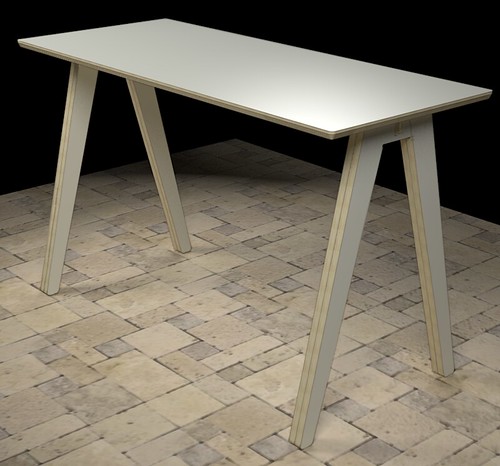the keynote address at SketchUp 3D Basecamp last week was given by Nick Ierodiaconou, a London based designer 00 and OpenDesk. One of the things he talked about was open source furniture designed to be made locally. The idea is instead of ordering furniture made on the other side of the planet, people could order from local makers. The OpenDesk site offers files for furniture designed to be made from sheet materials.
This local maker thing really isn't new to those of us who make fine furniture. That's the way we've been doing it for years. But for the "flat pack market", this is rather new. Instead of going to Wally World to buy furniture, folks might be able to have someone in their own community make it for them with the opportunity for customization and personalization. For those with the equipment, it might be worth looking into becoming a linked maker.
I doodled out a quickie model of this desk from the catalog by importing the downloaded CAD file into SketchUp and converting it to 3D.

Note: I have no affiliation with OpenDesk and I'm not selling anything.
This local maker thing really isn't new to those of us who make fine furniture. That's the way we've been doing it for years. But for the "flat pack market", this is rather new. Instead of going to Wally World to buy furniture, folks might be able to have someone in their own community make it for them with the opportunity for customization and personalization. For those with the equipment, it might be worth looking into becoming a linked maker.
I doodled out a quickie model of this desk from the catalog by importing the downloaded CAD file into SketchUp and converting it to 3D.

Note: I have no affiliation with OpenDesk and I'm not selling anything.
